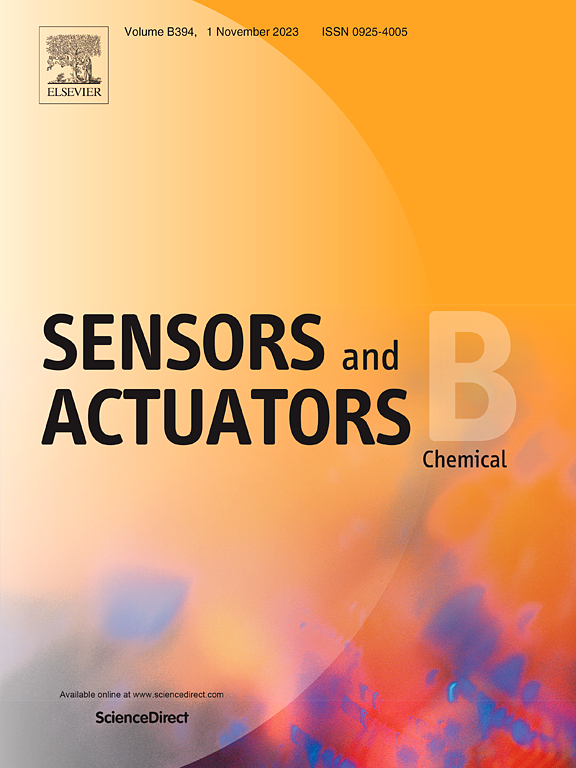基于NH2-GO/Fe-Ni@Ti0033C2Tx/NH2-GO/Fc@AuNPs和BPNPs/AuPt-MB双信号放大的三明治结构比例电化学免疫传感器检测survivin
IF 8
1区 化学
Q1 CHEMISTRY, ANALYTICAL
引用次数: 0
摘要
Survivin作为膀胱癌的重要生物标志物,探索其检测方法具有重要意义。为此,研制了一种灵敏的比例电化学免疫传感器。简而言之,Fe-Ni@Ti3C2Tx (NH2-GO/Fe-Ni@Ti3C2Tx/NH2-GO)增强的双层氨基氧化石墨烯(NH2-GO)夹层显著放大了检测信号。ferrocene@Au纳米粒子(Fc@AuNPs)提供了参考信号,Ab1通过Au-N键锚定。此外,aupt -亚甲基蓝(AuPt-MB)不仅作为次级信号,还通过Au-NH2和Pt-NH2键锚定Ab2。黑磷纳米板(BPNPs)提高了电导率,并为AuPt-MB提供了额外的结合位点。该免疫传感器具有较宽的检测范围(0.001~1000 ng/mL)和较低的检出限(0.00065 ng/mL),可成功检测人类尿液样本中的survivin,具有良好的临床应用前景。本文章由计算机程序翻译,如有差异,请以英文原文为准。
A sandwich-configuration ratiometric electrochemical immunosensor based on dual signal amplification of NH2-GO/Fe-Ni@Ti0033C2Tx/NH2-GO/Fc@AuNPs and BPNPs/AuPt-MB for the detection of survivin
Survivin serves as a crucial biomarker for bladder cancer, so exploring the detection method is essential. Therefore, a sensitive ratiometric electrochemical immunosensor was developed. In brief, a double-layered amino graphene oxide (NH2-GO) sandwich enhanced by Fe-Ni@Ti3C2Tx (NH2-GO/Fe-Ni@Ti3C2Tx/NH2-GO) significantly amplified the detection signal. ferrocene@Au nanoparticles (Fc@AuNPs) provided a reference signal, and Ab1 was anchored via an Au-N bond. Moreover, AuPt-methylene blue (AuPt-MB) served not only as a secondary signal but also anchored Ab2 through Au-NH2 and Pt-NH2 bonds. Black phosphorus nanoplates (BPNPs) improved conductivity and provided additional binding sites for AuPt-MB. The immunosensor exhibited a broad detection range (0.001–1000 ng/mL) and a low detection limit (0.00065 ng/mL), facilitating successful survivin detection in human urine samples with promising clinical analysis applications.
求助全文
通过发布文献求助,成功后即可免费获取论文全文。
去求助
来源期刊

Sensors and Actuators B: Chemical
工程技术-电化学
CiteScore
14.60
自引率
11.90%
发文量
1776
审稿时长
3.2 months
期刊介绍:
Sensors & Actuators, B: Chemical is an international journal focused on the research and development of chemical transducers. It covers chemical sensors and biosensors, chemical actuators, and analytical microsystems. The journal is interdisciplinary, aiming to publish original works showcasing substantial advancements beyond the current state of the art in these fields, with practical applicability to solving meaningful analytical problems. Review articles are accepted by invitation from an Editor of the journal.
 求助内容:
求助内容: 应助结果提醒方式:
应助结果提醒方式:


